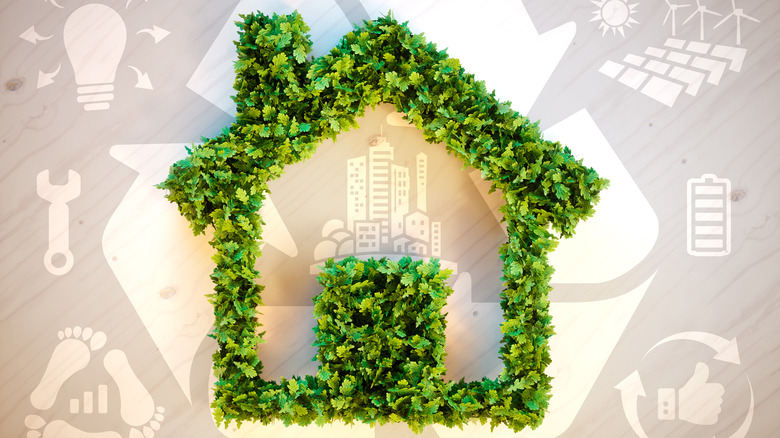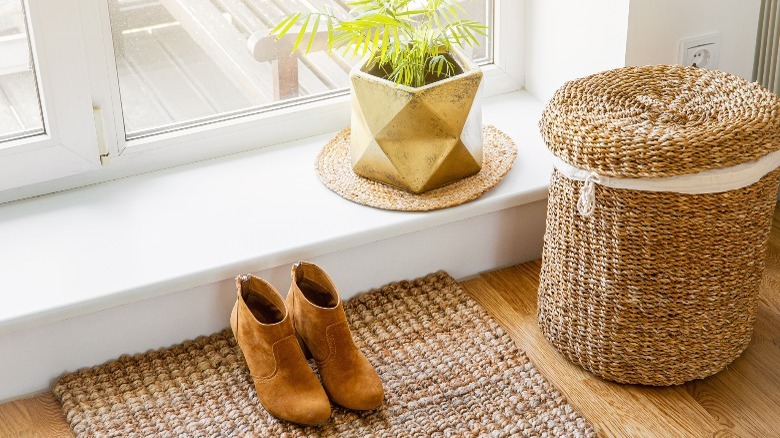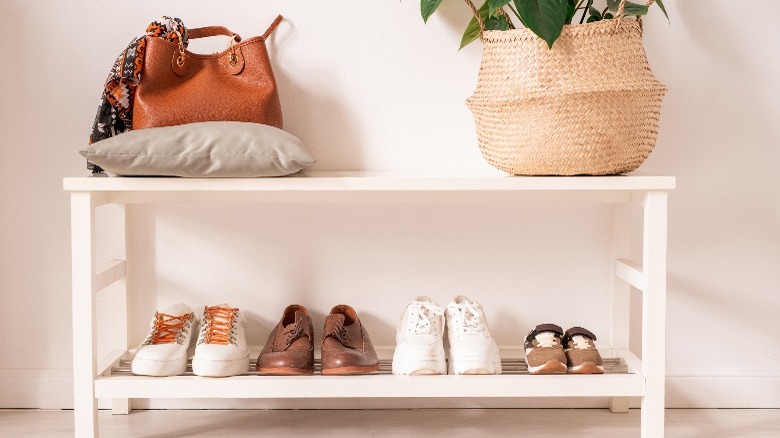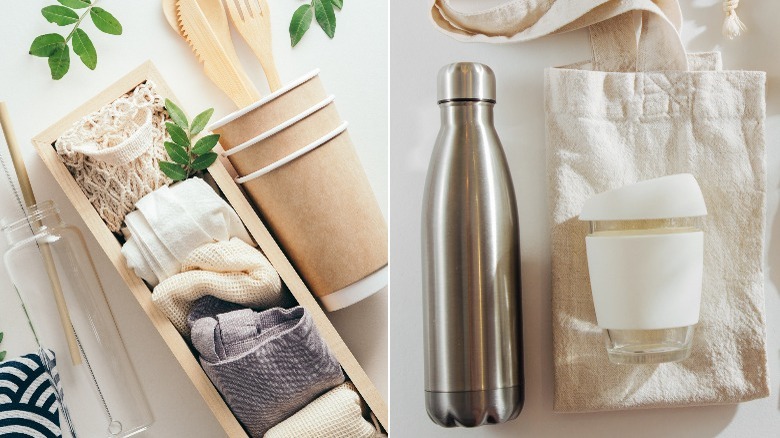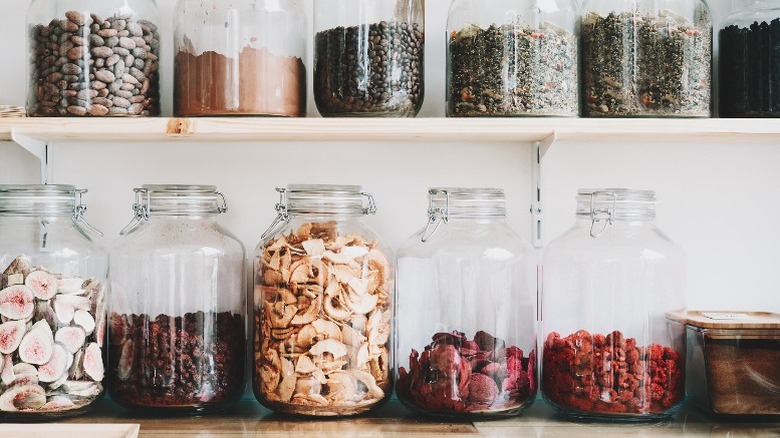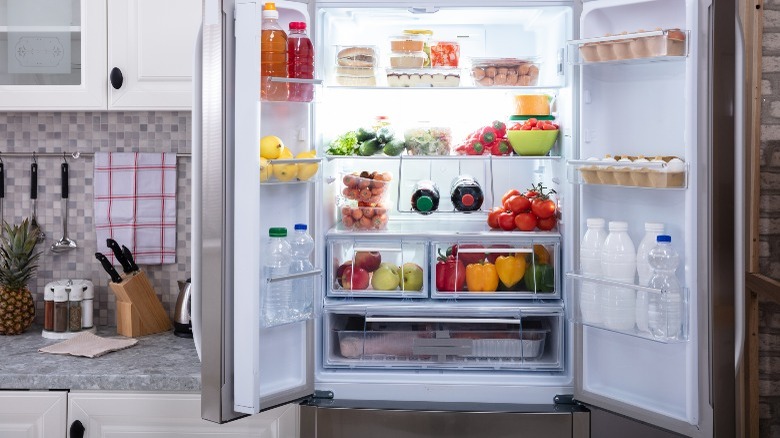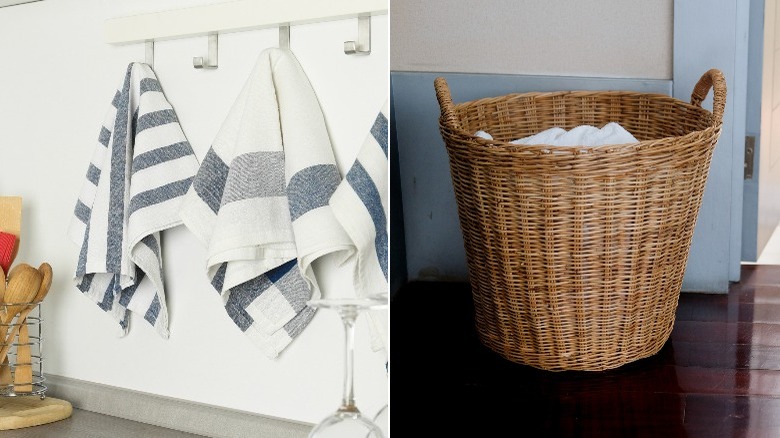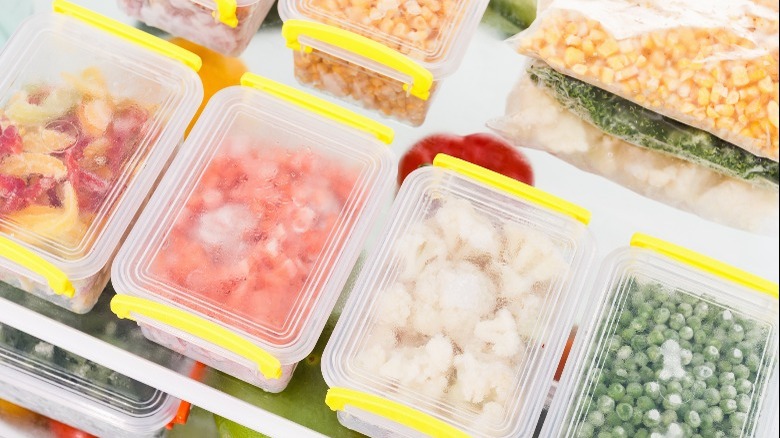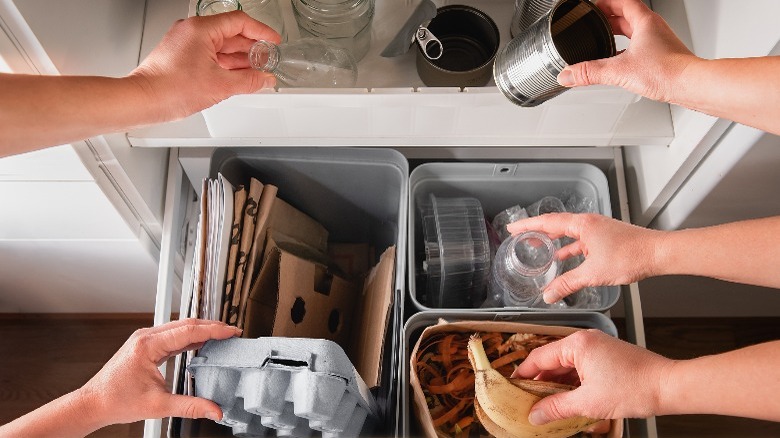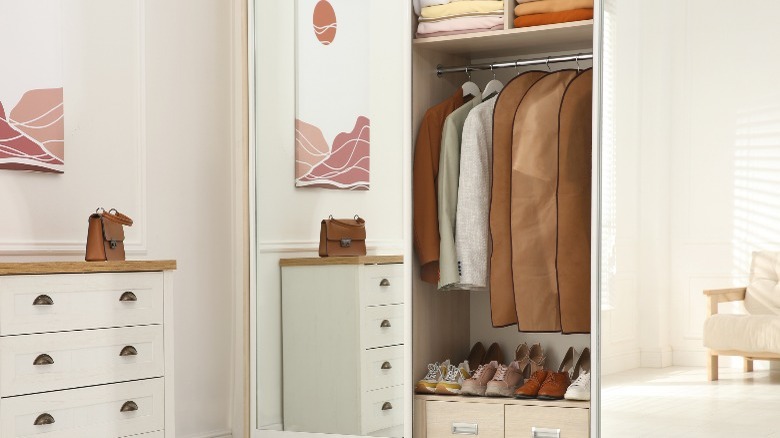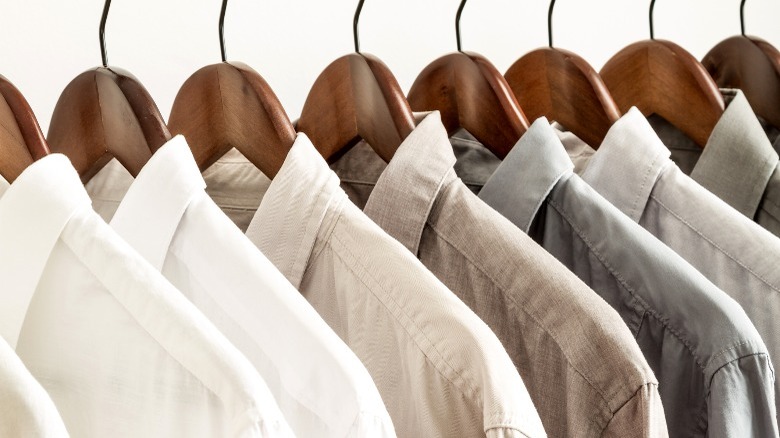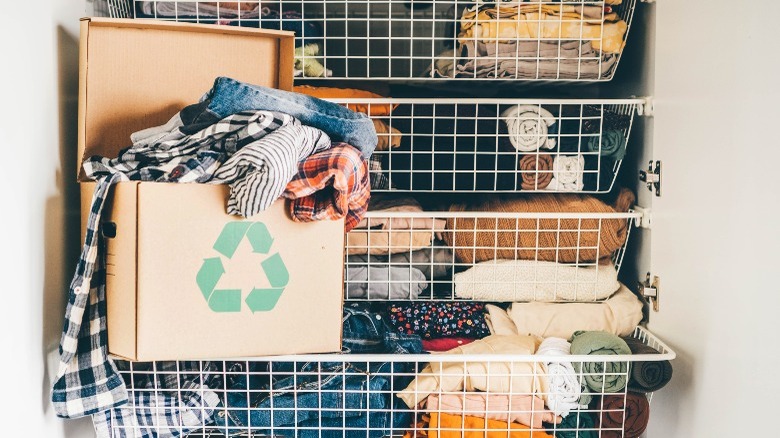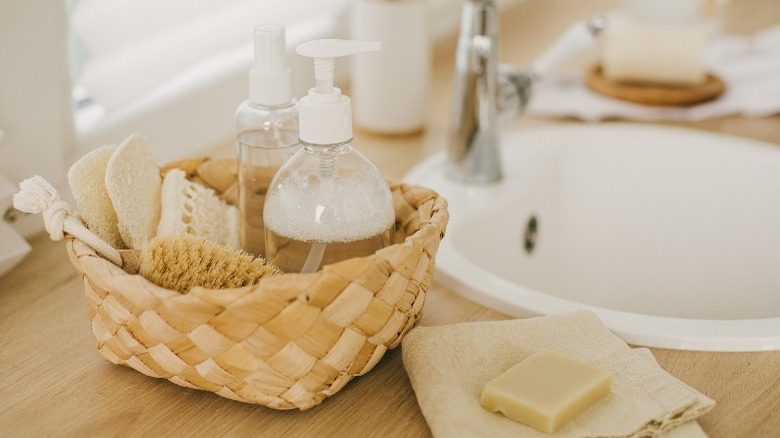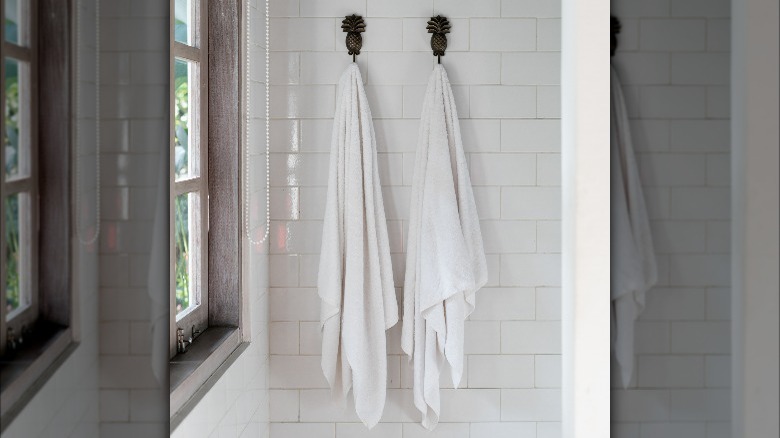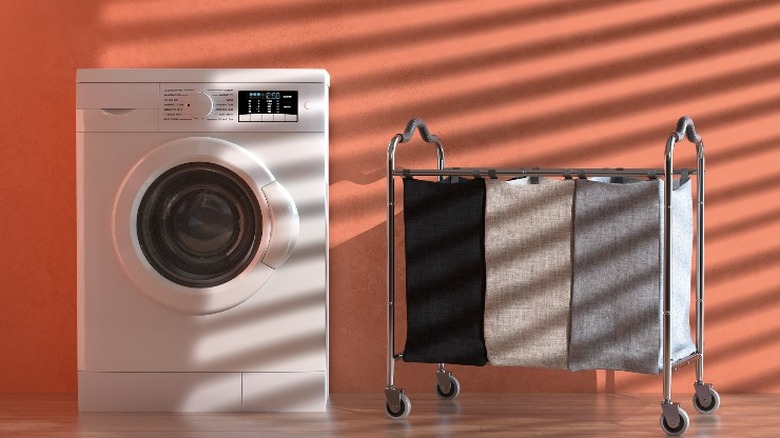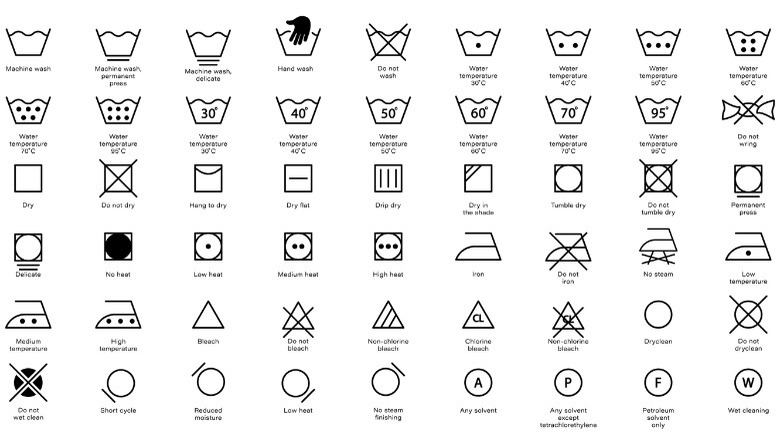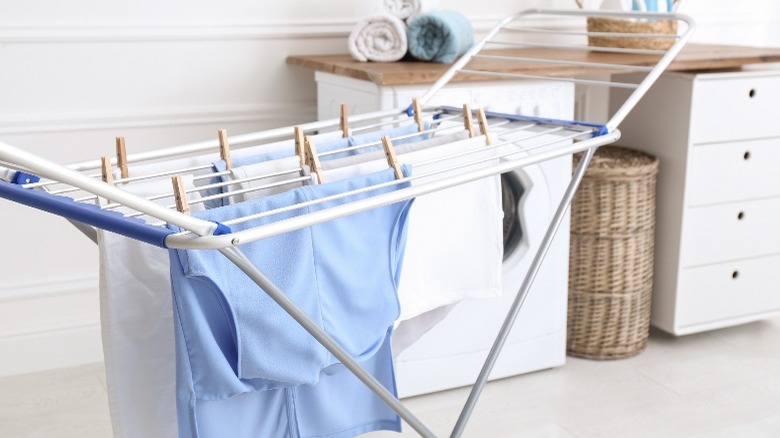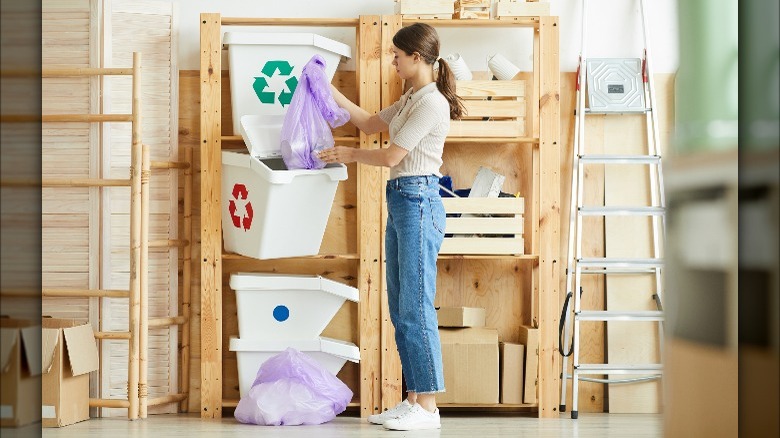20 Smart Ways To Organize Your Home In An Eco-Friendly Manner
With every report of extreme weather events, melting ice caps, and greenhouse gas emissions it's easy to experience a certain deflation of spirit. Part of that lies in the knowledge that much of this is affected by large corporations, and not our neighbors or ourselves, making it something we believe we have little control over. As individuals and homeowners, we can't completely curtail the effects of global warming, but according to Green Match, there are significant actions available to us to upgrade our home's systems and make improvements that reflect energy efficiency and eco-friendly practices, such as installing solar panels and energy-saving appliances.
In addition, our daily habits have a collective and undeniable impact. Consuming less, recycling, and keeping items we own in working order are just a few small behaviors with big consequences when combined with others doing the same. These choices are not only better for the planet, they're beneficial for us too. Simple Home Simple Life explains that the slow living home design trend utilizes principles that are based on sustainable and functional design. The ideas can be adapted for already constructed dwellings and include allowing as much light as possible into the interiors, decluttering and decorating with meaningful pieces, outfitting our kitchens to encourage healthful eating, and striving to choose sustainable options. Through them, we minimize energy use and maximize feelings of well-being. Below, we share 20 home organizing tips that promote an eco-friendly home alongside environmentally sound habits.
1. Mudroom or entryway storage
Place a lidded basket at the primary entrance for reusable grocery bags, donations, or returnable bottles. You'll remember to grab whatever's inside on the way out the door, yet it will be nicely concealed in the meantime. Choose a hand-woven dried grass basket rather than plastic for sustainability and aesthetics.
2. A shoe and boot rack
Remove shoes to a tray or tiered rack upon entering the home to avoid bringing in dirt and germs. It reduces the need to run the vacuum and the use of solutions and chemical stain removers. Plus, it lessens scratching caused by pebbles and grit stuck in shoe treads, ensuring longevity for hardwood floors.
3. Reusable to-go kits
Conveniently store reusable picnic and lunch kits and to-go beverage containers together so they're easily accessible. This helps eliminate the reliance on disposable items, such as paper cups, plastic straws, and silverware. Additionally, keep laundered cloth bags compacted and ready for a grocery or errand run.
4. A dry goods pantry
It's eco-friendly and more affordable to purchase dry goods such as beans, grains, pasta, and nuts in bulk because there's less packaging. Portion them into upcycled food jars or invest in a storage system. Containers that stack are particularly useful, while glass is a more sustainable option than plastic.
5. Properly stored perishable foods
Being informed about how to correctly store perishable items dramatically cuts down on food waste — a major contributor to the greenhouse gas methane (via the USDA). Find best practices for humidity levels, temperature, and wrapping materials online. Additionally, use a magnetic whiteboard to highlight fresh kids' snacks, meal ideas, or soon-to-be expired foods.
6. Sustainable cleaning cloths
Replace or reduce paper towels with cleaning cloths. Hang several above the kitchen work area or fold them neatly in a drawer; collect them into an appealing basket for laundering. Consider color-coding towels, for example, green stripes for drying washed fruits and veggies, blue for cleaning counters and tabletops, and red for germ-filled jobs.
7. Freezer food over fast food
Taking advantage of local and seasonal produce is great for our wallets, health, and the planet. Yet, with harvests coinciding with each other and our busy lives, it can be difficult to make use of the available abundance. To that end, a stocked freezer provides preservation, storage, and an alternative to energy-consuming fast food.
8. In-home recycling center
A garbage and recycling station simplifies the sorting of kitchen and household waste. Even if your municipality offers single-stream recycling, which makes the separating of materials unnecessary, you may want to isolate newspapers and paperboard for craft projects as well as food scraps for composting away from the recyclables for return.
9. Low waste home office
It's easier than ever to go low waste and energy efficient in your home office. Digital applications reduce paper use, while what's printed can be recycled later. Additionally, you can quickly switch electronics completely off with a power strip, and put the computer in sleep mode when it's not needed. Lastly, swap traditional lightbulbs with LED bulbs.
10. Schedule maintenance
Organize manuals and prior maintenance history so you can appropriately schedule home maintenance services throughout the year. This allows expenditure budgeting as well as timely appointments. In addition, preventative and routine services are generally less costly than repairing or replacing home systems and major appliances. Use a shared calendar app and invite your housemates.
11. Garment bags
Fast fashion is a significant contributor to greenhouse gases and pollution, notes Climate Council. Garments are viewed as disposable and purchased in vast quantities. Instead, shop less, choose high-quality items, and take proper care of them. Cloth garment bags can minimize fading and keep clothing dust free, resulting in fewer trips to the dry cleaner and longer-lasting pieces.
12. Wooden hangers
Wooden hangers are a win-win. They offer substantial support for garments, lend the closet a clean boutique aesthetic, and reduce plastic use if chosen in place of plastic hangers. For maximum eco-consciousness, purchase wooden hangers certified by the Forest Stewardship Council (FSC), which ensures they were manufactured in congruence with principles of sustainability and responsible forest management.
13. A place for the not-yet-dirty
We all have garments we wear more than once before washing. They're not dirty but we'd prefer not to put them in the dresser with clean clothing. A dedicated spot for these pieces ensures they'll be worn again instead of tossed in the wash prematurely. This helps save water, energy, and the integrity of fabrics.
14. Donations
Garments are usually worn as few as seven times before they're disposed of, reports the Wall Street Journal. Donating clothing allows its continued wear and stems the production and consumption of new pieces. In the closet, the practice creates more storage and easier organization. Keep a pretty basket to remind you to collect items you're ready to pass along.
15. Green cleaning
Using green cleaning supplies and body products may help improve your home's air quality and lessen personal exposure to toxic chemicals. Purchase items with few ingredients formulated with the environment and wellness in mind. Alternatively, make your own with naturally derived materials, such as Castile soap, vinegar, baking soda, and essential oils for fragrance.
16. Extra towel hooks
Install extra hooks in the bathroom so towels can dry thoroughly after use. They'll remain cleaner and fresher smelling longer, allowing more time between washings; The Cleaning Institute recommends three to five uses. If all of your towels are similar, you may want to assign a particular hook for each family member.
17. A laundry sorter
Many fabrics can be washed in cold water, particularly delicates and colors, yet whites should be laundered in hot for the brightest clean, advises Martinizing Dry Cleaning. It requires energy to heat the water in the washing machine; with a sorting hamper you're more likely to wait until you have a full load's worth.
18. A laundry key
Following manufacturers' laundering instructions helps to ensure clothing lasts longer, but it's not always clear what the symbols mean. A guide displayed in the laundry room can assist in deciphering them. When in doubt, select the cold water setting which is gentler yet effective on most fabrics with today's detergents and washing machines.
19. An air-drying rack
Opting to air-dry the laundry rather than machine-drying uses less energy and helps to lower your carbon footprint. It's also better for garments, reducing shrinking, fading, and the strain on fabrics caused by high heat. Indoor racks make it possible when the weather's not cooperating, and they're available in a variety of free-standing and wall-mounted space-saving models.
20. A garage organization station
Grab some space in the garage for a recycling station to maintain a clutter-free home interior. Shelving allows the best use of space; if it's convenient, easy on the eyes, and organized, it'll be more efficient and likely to be utilized. Consider bins for textile donations, returnables, and recyclable glass, metal, plastic, and paper.
